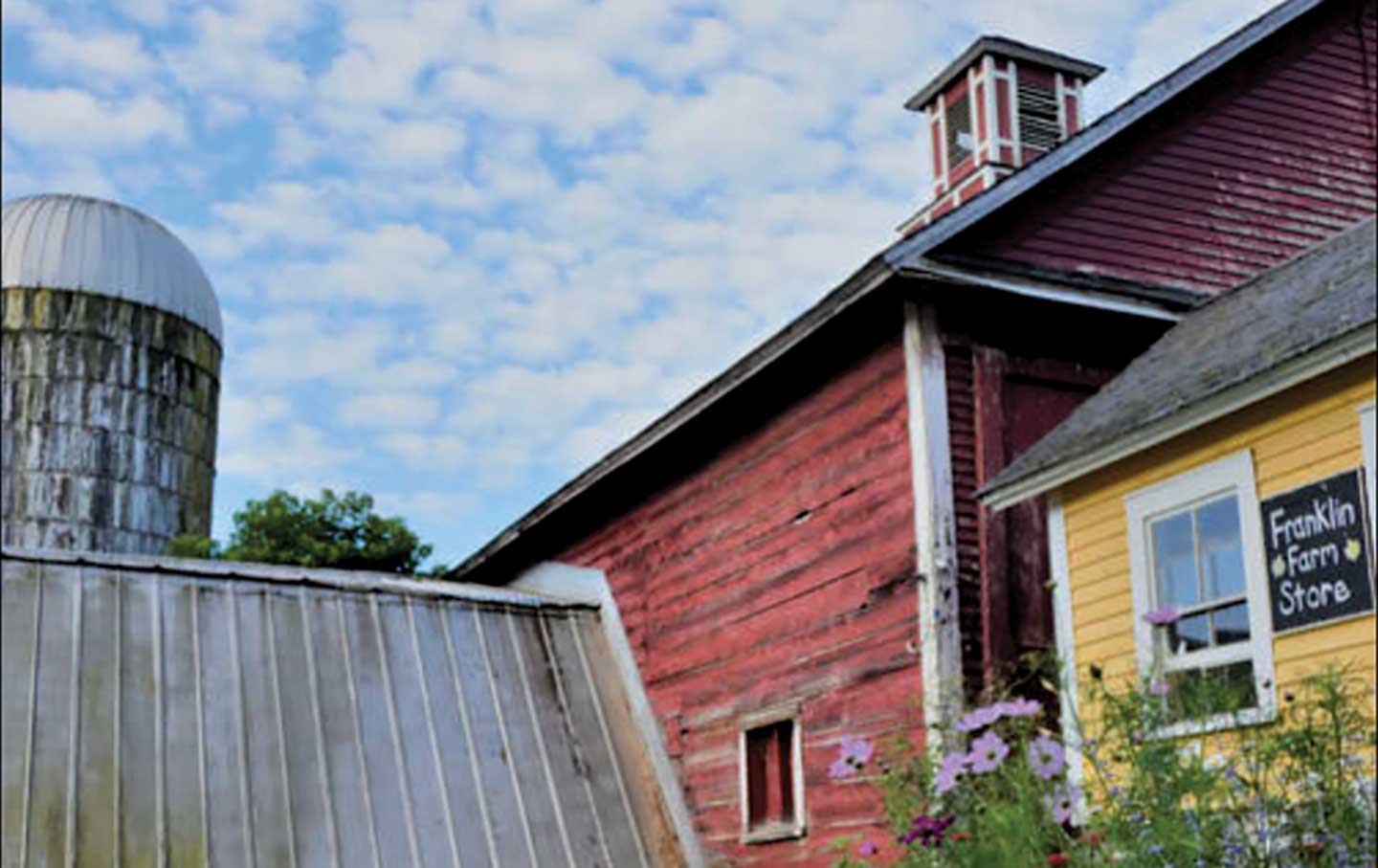Rethinking rurality
/
August 13, 2024
Rural America looms large in the 2024 election. So why is it such a small part of the Progressive Caucus’ agenda?


The progressive agenda put out by the Congressional Progressive Caucus is a commendable effort to push the Democratic Party to put people and the planet before corporate control and profits. The proposal includes a call to “end hunger and support local farmers and producers” and to “invest in rural infrastructure, small farms, and dismantle Big Ag.” This should be welcomed, as should the recommendation to increase funding for rural hospitals. However, giving rural Americans just 24 words in the CPC document, out of a total of 1,656, is far from enough. In fact, what’s missing could fill a backyard.
For those who believe that fixing our economy and politics requires addressing the root causes of the rural-urban divide, there are many good elements to the CPC agenda. Among the most important is the strong emphasis on challenging corporate power, through stronger antitrust enforcement, as well as specific tactics to reduce the increasingly dominant but largely unregulated dirty money from private equity firms that flows through elections. Its call to limit corporate “fox-guarding-the-henhouse” influence on federal regulation is also critical.
The Progressive Proposition Agenda is also strongly pro-worker, from its recommendation to implement comprehensive labor law reforms and a national minimum wage to its calls to limit child care costs and protect workers during strikes. Such policies are good for workers and communities across the country, including rural areas. In fact, the Rural New Deal has many similar recommendations.

But here’s what’s missing: a proactive program to build a more just and resilient economy from the bottom up, one that empowers people to take control of their lives and meet their own needs. The CPC plan, fittingly, calls for strengthening the safety net, taxing the rich, and using that revenue to improve the lives of millions of struggling people. It’s the redistribution program we progressives are most familiar with and comfortable with.
There is much less attention, however, to “predistribution” policies—those that help people help themselves, that enable communities to solve most problems close to home, that create real and lasting wealth for ordinary people. A focus on policies that cultivate self-reliance would help people everywhere, but it is especially critical in rural communities. Economically, such policies would help reverse decades of extraction, not just of dwindling natural resources, but of rural communities’ wealth and people. Politically, such policies garner broad support because rural people strongly prefer a helping hand to a handout. As a January 2024 poll of government scholars shows, rural people overwhelmingly want government to “let us improve our communities ourselves” rather than impose solutions from above.
What types of federal policies contribute to an economy that creates local wealth, enables community solutions, and promotes self-sufficiency? Policies that put local people in the driver’s seat, allowing them to tailor programs and use funds to their local realities. In my 40 years of experience in rural development, I have seen state and federal programs that prioritize local control and building local capacity garner much broader community support and have greater long-term impact. Equally important are policies that invest in and incentivize the restoration and sustainable use of land and ecological capital. The City of St. Paul, Virginia, for example, used federal resources to rebuild its economy around the restoration of the Clinch River, putting a critical local resource at the center of efforts to move beyond the coal industry.
Current number

At a “Rural Communities in Action” meeting at the White House on May 14, Agriculture Secretary Tom Vilsack admitted that the strategy that dominated U.S. farm policy for 50 years, which Nixon Agriculture Secretary Earl Butz called “get big or get out,” was a huge mistake. Moving from an “all of the above” approach that allowed corporate dominance of American agriculture, the USDA is now emphasizing family farms, investing in regional food systems, and helping farmers and forest landowners adopt management practices that build soil and sequester carbon. This long-overdue course correction is popular among producers: 180,000 farmers managing 250 million acres are expected to sign up in the next five years. And that’s exactly what we need to shore up our food system and help curb climate change.
Finally, a progressive agenda must prioritize policies that promote greater economic diversity and local ownership. This includes simplifying access to grants and loans for smaller and newer businesses; directing federal procurement dollars to small and minority-owned businesses (in 2023, the federal government purchased $178 billion in goods and services from small businesses, a record amount); and redirecting tax and financial incentives from corporate chains to local independents.
Democracy is indeed on the ballot this November. But for the millions of Americans who believe the economy and political system are rigged against them, calls to “save our democracy” fall on deaf ears. That includes persuadable rural voters who will play a crucial role in the election, particularly in swing states. For progressives working to prevent a MAGA victory, advancing federal policies that help rebuild rural communities while creating a more resilient economy must be part of that strategy.
Can we count on you?
In the upcoming election, the fate of our democracy and basic civil rights are at stake. The conservative architects of Project 2025 are planning to institutionalize Donald Trump’s authoritarian vision at every level of government if he wins.
We have already witnessed events that fill us with both terror and cautious optimism, in all of this, The nation has been a bulwark against misinformation and a champion of bold, principled perspectives. Our dedicated writers sat down with Kamala Harris and Bernie Sanders for interviews, parsed J.D. Vance’s shallow right-wing populist appeals, and discussed the path to a Democratic victory in November.
Stories like these and the one you just read are vital at this critical moment in our country’s history. Now more than ever, we need independent, lucid, and deeply researched journalism to make sense of headlines and separate fact from fiction. Donate today and join our 160-year legacy of speaking truth to power and elevating the voices of grassroots advocates.
Throughout 2024, and in what will likely be the defining election of our lifetimes, we need your support to continue publishing the eye-opening journalism you rely on.
Thank you,
The editors of The nation





